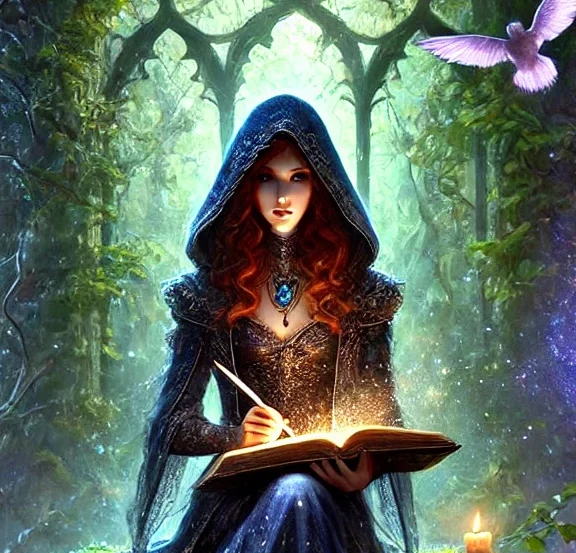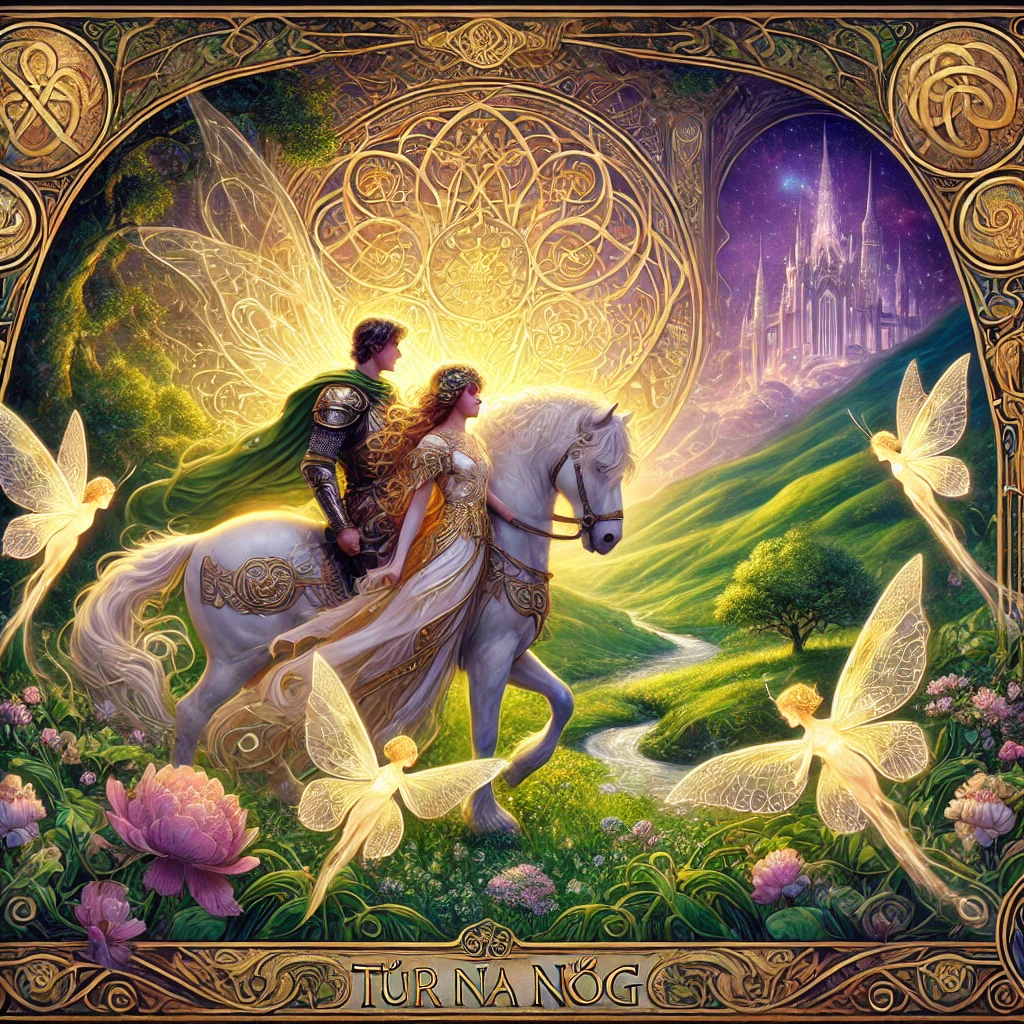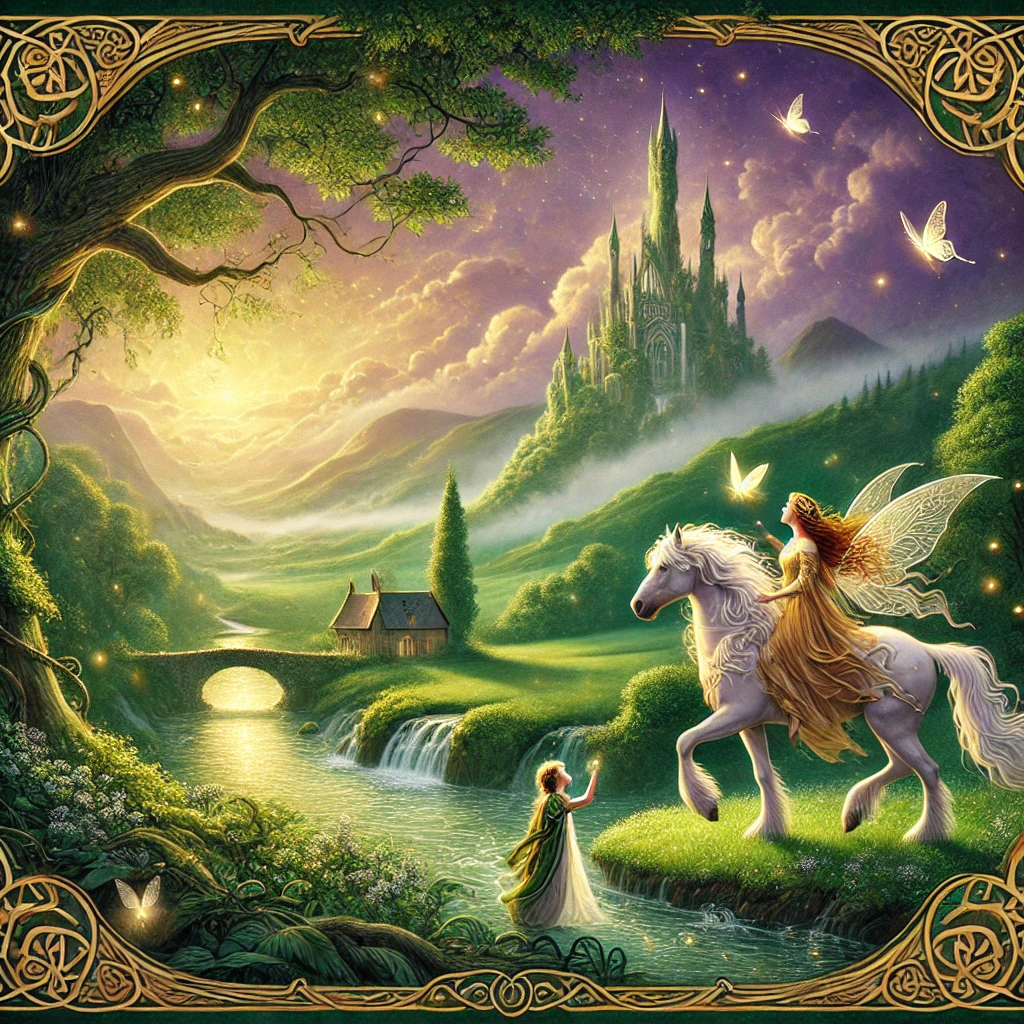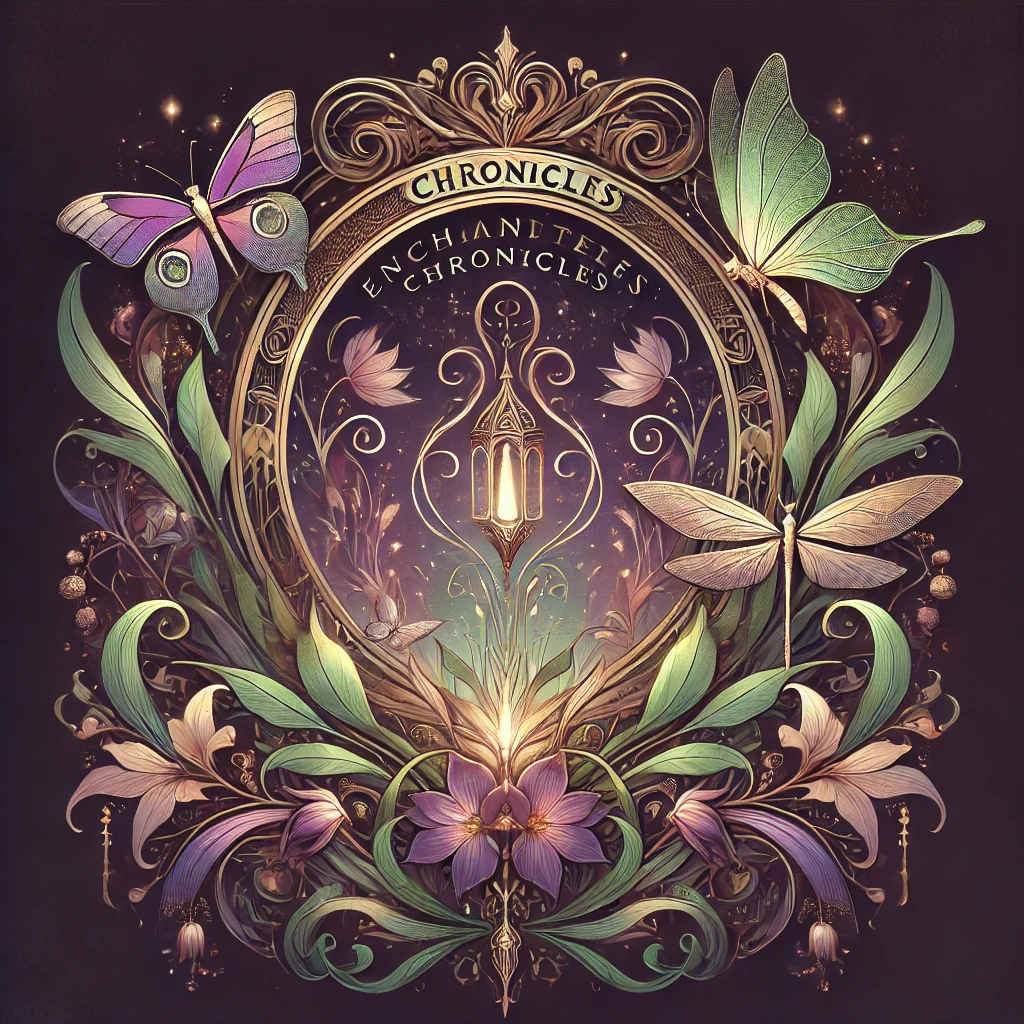Tír na nÓg: The Land of Eternal Youth and the Tragic Fate of Oisín
In the heart of Irish mythology lies a tale of love, adventure, and loss—the legend of Tír na nÓg, the mystical land of eternal youth. This enchanting story follows Oisín, the son of the great warrior Fionn MacCumhaill, who falls in love with the fairy princess Niamh Cinn Óir. Their journey to a paradise untouched by time is one of Ireland’s most poignant and enduring myths, resonating across centuries through oral tradition, poetry, and folklore.

By : Lirien

A Legendary Journey into the Irish Otherworld
The Story of Oisín and Niamh
Oisín, a famed warrior of the Fianna, was known for his strength, wisdom, and poetic soul. One day, as he rode through the lush landscapes of Ireland, he encountered Niamh of the Golden Hair, a radiant fairy maiden from the mystical land of Tír na nÓg. She had come seeking Oisín, enchanted by tales of his bravery.
Spellbound by her beauty, Oisín agreed to leave Ireland behind and journey with Niamh to her homeland. As they rode across the sea on her magical white horse, they soon arrived in Tír na nÓg, a land where no one aged, sorrow did not exist, and joy was everlasting.
For three hundred years, Oisín lived in bliss, unaware of the passage of time. But despite the splendor of Tír na nÓg, nostalgia for Ireland grew within him. He longed to see his father, Fionn, and his companions once more. Niamh, knowing the dangers, reluctantly allowed him to return—but with one warning: he must never set foot on Irish soil.
Upon his return, Oisín was devastated to find Ireland changed. The Fianna were gone, and the land was unrecognizable. While traveling through the countryside, he saw men struggling to lift a heavy stone. Forgetting Niamh’s warning, he leaned down to help—but as soon as he touched the earth, he instantly aged three hundred years.
As an old, frail man, he was taken to Saint Patrick, to whom he recounted the glorious past of Ireland’s warriors and the wonders of Tír na nÓg. Soon after, he died, never to return to the immortal land he once called home.
Historical and Social Context
The legend of Tír na nÓg dates back to pre-Christian Ireland, deeply rooted in Celtic mythology. The Irish people believed in an Otherworld, a mystical realm inhabited by the Tuatha Dé Danann, godlike beings who ruled over supernatural lands such as Tír na nÓg, Mag Mell, and Emain Ablach.
The story of Oisín and Niamh likely emerged during the early medieval period (5th-9th century), when oral storytelling was the primary means of preserving history and culture. The Fianna, led by Fionn MacCumhaill, were believed to be semi-divine warrior bands who roamed Ireland before the arrival of Christianity. Their legends embodied the ideals of heroism, honor, and fate.
As Christianity spread through Ireland, these pagan myths were adapted to fit new religious narratives. Oisín’s encounter with
Saint Patrick in later versions of the story symbolizes the transition from Ireland’s pagan past to its Christian future. His fate—trapped between the old world and the new—reflects the cultural shift of the time.
From Oral Tradition to Written Folklore
For centuries, the tale of Tír na nÓg was passed down through seanchaí (traditional storytellers), evolving with each retelling. It first appeared in written form during the 12th century in texts such as The Fenian Cycle, a collection of sagas centered on Fionn MacCumhaill and the Fianna.
During the 19th-century Celtic Revival, Irish writers and poets reignited interest in these ancient myths, linking them to national identity and cultural pride. Today, Tír na nÓg continues to inspire literature, music, and modern fantasy.
Modern Legacy: Festivals, Tourism, and Cultural Impact
The legend of Tír na nÓg remains a cherished part of Irish folklore, celebrated in festivals and storytelling events. Places associated with the Fianna—such as the Hill of Tara and Glenveagh National Park—draw tourists eager to explore Ireland’s mythical past.
Festivals: Events like the Puck Fair in Killorglin and the Oireachtas na Gaeilge celebrate Ireland’s mythological heritage through music, poetry, and performances.
Themed Tours: Guided tours, such as the Celtic Legends Trail, take visitors through Ireland’s mythological landscapes, bringing the stories to life.
One last word
The story of Oisín and Tír na nÓg is a timeless tale of love, destiny, and the passage of time. It reminds us of the bittersweet nature of immortality and the deep connection between past and present in Irish culture. Whether through ancient manuscripts, lively storytelling, or modern adaptations, Tír na nÓg remains one of Ireland’s most enduring and magical myths.

Join our community of readers Subscribe To our newsletter!

Enchanted Chronicles: Ignite the Myths Within
Step into a world where ancient myths are no longer confined to books—they are part of your journey.
Sign up for free!
We won’t send you spam.
Unsubscribe at any time.
